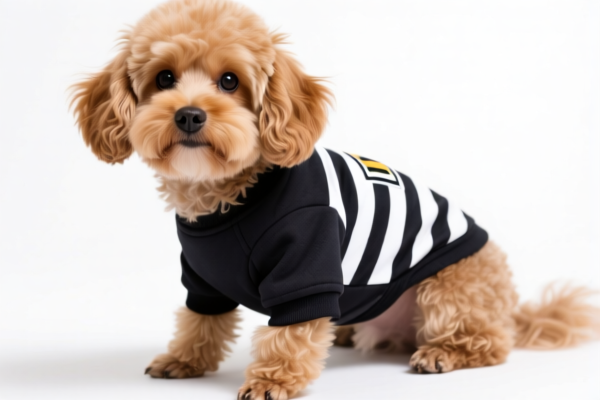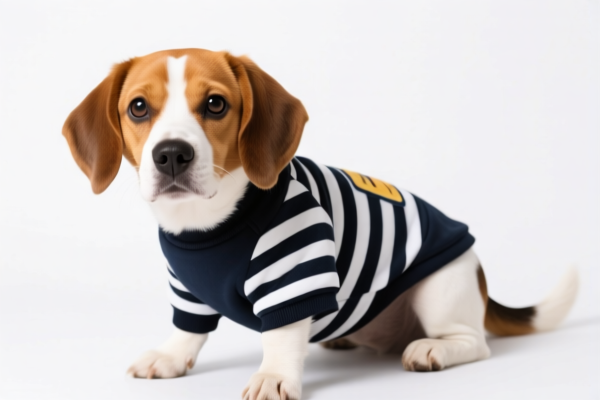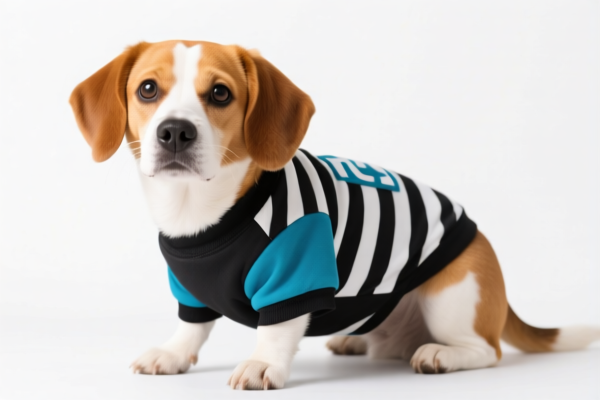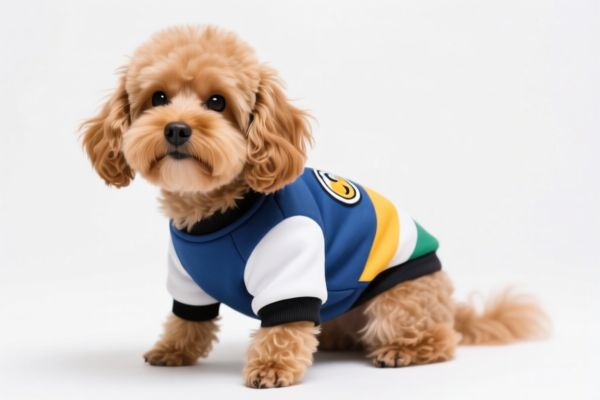| HS Code | Official Doc | Tariff Rate | Origin | Destination | Effective Date |
|---|---|---|---|---|---|
| 6114909070 | Doc | 35.6% | CN | US | 2025-05-12 |
| 6109908010 | Doc | 53.5% | CN | US | 2025-05-12 |
| 6109908030 | Doc | 53.5% | CN | US | 2025-05-12 |
| 3926201010 | Doc | 30.0% | CN | US | 2025-05-12 |
| 3924905650 | Doc | 40.9% | CN | US | 2025-05-12 |




Pet Clothing
Pet clothing encompasses garments designed for animals, typically dogs and cats, but also including other species such as rabbits, birds, and even reptiles. These items serve a variety of purposes beyond simple aesthetics.
Materials
A diverse range of materials are employed in pet clothing construction:
- Cotton: A common, breathable, and comfortable choice, suitable for everyday wear. Often used in t-shirts, sweaters, and lightweight dresses.
- Polyester: Durable, water-resistant, and often used in outerwear like raincoats and jackets. Frequently found in fleece fabrics for warmth.
- Fleece: Provides excellent insulation and is commonly used in sweaters, hoodies, and pajamas.
- Nylon: Strong and lightweight, often used in vests and harnesses.
- Denim: Used for jackets, vests, and more durable outfits.
- Waterproof/Breathable Fabrics: Specialty fabrics like polyurethane laminates are used in raincoats and protective gear.
- Knitted Fabrics: Acrylic, wool, and blends are used for sweaters and warmer items.
- Down/Synthetic Fillings: Used in winter coats for increased warmth.
Purpose & Function
- Warmth & Protection: The primary function for many items, particularly in colder climates or for breeds with limited natural insulation.
- Visibility: Brightly colored or reflective clothing enhances visibility during nighttime walks.
- Protection from Elements: Raincoats, snowsuits, and UV-protective clothing shield pets from adverse weather conditions.
- Identification: Clothing can display messages like "Lost Pet" or provide space for identification tags.
- Medical Reasons: Post-surgical garments protect wounds and prevent licking. Some clothing provides compression for anxiety or skin conditions.
- Fashion & Aesthetics: A significant driver of the pet clothing market, with a wide variety of styles available.
- Anxiety Reduction: Snug-fitting garments can provide a sense of security for anxious pets (often referred to as "ThunderShirts").
Usage Scenarios
- Everyday Wear: T-shirts, sweaters, and light jackets for casual outings.
- Cold Weather: Winter coats, snowsuits, and sweaters for protection from snow and ice.
- Rainy Weather: Raincoats and waterproof jackets.
- Nighttime Walks: Reflective vests and clothing for increased visibility.
- Post-Surgical Recovery: Protective garments to prevent wound interference.
- Special Occasions: Costumes for holidays or events.
- Travel: Clothing for warmth during flights or car rides.
Common Types
- Sweaters: Provide warmth and are available in various styles (cable knit, fleece, etc.).
- Jackets & Coats: Offer protection from cold, wind, and rain.
- Raincoats: Waterproof and often feature reflective elements.
- T-shirts & Tank Tops: Lightweight and casual wear.
- Hoodies: Casual and provide some warmth.
- Pajamas: Provide comfort and warmth during sleep.
- Costumes: Designed for holidays or special events.
- Bandanas: Primarily fashion accessories, but can also provide cooling when wet.
- Booties: Protect paws from cold, heat, or rough terrain.
- Harnesses & Vests: Combine clothing with functionality for walking and identification.
- Snug-Fit Shirts/Anxiety Vests: Provide gentle pressure to help calm anxious pets.
- Post-Surgical Suits: Designed to protect wounds and prevent licking.
Pet clothing falls under various classifications depending on the material and specific type of garment. Based on the provided information, the following HS codes are relevant:
-
6114909070: This HS code covers “Other garments, knitted or crocheted: Of other textile materials: Other Other: Other”. This would apply to knitted or crocheted pet clothing made from materials other than wool, cotton, or synthetic fibers. The total tax rate is 35.6%, comprised of a 5.6% base tariff, a 0.0% additional tariff, and a 30% additional tariff effective April 2, 2025.
-
6109908010: This HS code covers “T-shirts, singlets, tank tops and similar garments, knitted or crocheted: Of other textile materials: Other Men's or boys'”. While seemingly for human apparel, this could apply to knitted or crocheted pet clothing resembling t-shirts or singlets, made from materials other than wool, cotton, or synthetic fibers, if categorized as “men’s or boys’” apparel. The total tax rate is 53.5%, comprised of a 16.0% base tariff, a 7.5% additional tariff, and a 30% additional tariff effective April 2, 2025.
-
6109908030: This HS code covers “T-shirts, singlets, tank tops and similar garments, knitted or crocheted: Of other textile materials: Other Women's or girls'”. Similar to the previous code, this could apply to knitted or crocheted pet clothing resembling t-shirts or singlets, made from materials other than wool, cotton, or synthetic fibers, if categorized as “women’s or girls’” apparel. The total tax rate is 53.5%, comprised of a 16.0% base tariff, a 7.5% additional tariff, and a 30% additional tariff effective April 2, 2025.
Important Note: The classification of pet clothing can be complex. If the pet clothing is made of plastic, consider HS code 3926201010, which covers “Articles of apparel and clothing accessories (including gloves, mittens and mitts): Gloves, mittens and mitts: Seamless Surgical and medical”. The total tax rate is 30.0%, comprised of a 0.0% base tariff, a 0.0% additional tariff, and a 30% additional tariff effective April 2, 2025.
According to the provided reference material, the HS code options related to 'pet clothing' are limited, with only the following 4 found.
Customer Reviews
No reviews yet.